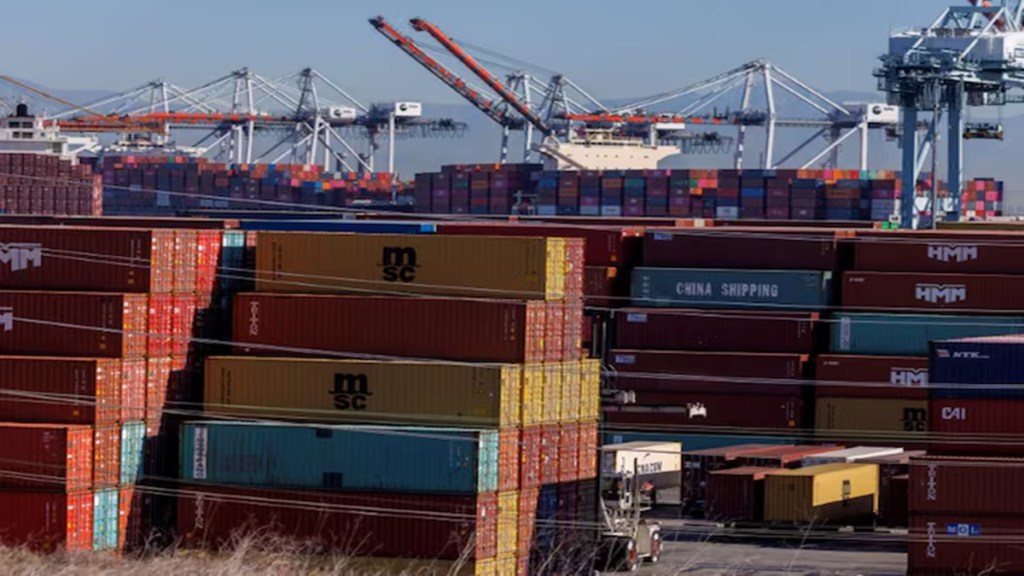By Ashok Gulati, Harsh Wardhan & Sulakshana Rao
US President Donald Trump’s latest push for “reciprocal tariffs” is aimed at reducing trade deficits and aligns with his broader “America First” policy. In 2024, the US trade deficit surged to $918.4 billion, from $784.9 billion in 2023. The highest deficit recorded was with China at $295.4 billion and India accounted for only $45.7 billion. However, Trump has frequently criticised India’s high tariffs and trade barriers on American goods, referring to India as a “tariff king”. During Prime Minister Narendra Modi’s recent US visit, Trump reiterated that India would not be exempt from these proposed tariffs, which are designed to match the import tariffs that other countries impose on US goods.
We don’t know yet whether these reciprocal tariffs will be on all goods, sector by sector, or commodity by commodity. But it is better to prepare for the worst and hope for the best. According to World Trade Organization data, India imposes significantly higher tariffs than the US with a simple average rate of 17% on all goods compared to about 3.3% imposed by the US (see graphic). The trade-weighted tariffs further highlight this gap — 12% in India vs. 2.2% in the US. However, the most striking difference is in the agriculture sector, where India’s tariffs are notably higher. The simple average tariff is 39% and the trade-weighted average is 65%. In comparison, the US maintains relatively low agricultural tariffs, with a simple average of 5% and a trade-weighted rate of 4%. Given this stark tariff disparity in agri-products, the proposed reciprocal tariffs could have a substantial impact on India’s agricultural exports to the US, its largest trading partner.
The US is India’s largest agri-export market, giving a trade surplus of $3.46 billion in 2023-24. Key Indian exports include shrimp, basmati rice, processed foods, and honey, while the US exports to India include almonds, cotton, ethanol, soya bean oil, etc. If Trump’s tariffs threat materialises, Indian agri-exports — especially duty-free items like shrimp — could become uncompetitive, while imports from the US may rise. This could shrink or even erase India’s agri-trade surplus with the US. Thus, cool-headed negotiations are important for India to maximise its gains by asking for market access for many agri-commodities in which India has a comparative advantage, and lowering duties on others where the US may like to export to India. US interests include exporting whisky (attracts 150% duty in India), walnuts and chicken legs (100% duty), skimmed milk powder (SMP) (60% duty), wheat, soya bean, and maize, (40%, 45%, and 50% duty respectively), besides tackling non-tariff barriers for genetically modified (GM) crops.
While India has adopted the use of Bt cotton and its by-products such as GM cottonseed oil and cottonseed oil cake (used as feed), it continues to ban GM soya bean and maize despite growing domestic demand for high-protein animal feed and ethanol production. This restrictive trade policy has frustrated the US, which remains a global leader in GM crop production with high yields.
The challenge for India is to strike a balance between protecting its farmers and keeping its most lucrative export market open. India and the US are already holding discussions for a broader trade agreement, with the ambitious “Mission 500” aiming to boost bilateral trade to $500 billion by 2030. There is quite a good scope for increasing India’s agri-exports to the US, provided India gets market access. Food preparations, butter, and bovine meat cuts attract more than 20% import duty in the US. These can be negotiated to lower levels, provided India is also ready to lower its import duties. Our analysis shows that Indian agriculture is quite competitive and its exports can increase, provided India’s export policy remains open. Many fruits and vegetables ranging from bananas to okra have export potential, but it will require streamlining their export value chains.
India has been open to selective concessions, like for Washington apples (from 50% to 15%). A phased tariff reduction in food preparations (currently at 150%), walnuts (100%), cut chicken legs (100%), and dairy products such as cheese and SMP (30-60%) should be implemented, particularly as the US is keen on pushing these to Indian markets. While tariffs on commodities like walnuts, cranberries, and blueberries can be reduced immediately, products where domestic producers remain competitive such as poultry (cut chicken legs) should undergo gradual tariff reductions.
Tariff concessions is like a Band-Aid for the short term. However, in the medium to long term, we need to set our house in order. First, research and development (R&D) investments is one major action. Currently, central and state agricultural investments together remain below 0.5% of agri-GDP, far lower than global comparisons. India must invest at least 1% of its agri-GDP in agricultural R&D, ensuring that exports remain competitive rather than dependent on trade protection. Second, India must modernise its agri-value chains, including expanding cold storage capacity, upgrading logistics infrastructure, and ensuring better quality certification and traceability. Key production clusters must be developed for agri-export hubs with the help of the Agricultural and Processed Food Products Export Development Authority to boost India’s agri-export potential in high-value horticultural commodities (banana, mango, mango pulp, and pomegranate) in markets like Russia, Korea, Japan, Australia, etc.
India’s agricultural trade can grow in an increasingly reciprocal global market if we negotiate smartly and prioritise our investments that make Indian agriculture more competitive rather than dependent on heavy subsidies (as in case of fertilisers). Trump’s tariff threat should be a wake-up call for India’s agricultural policymakers. If handled wisely, it could be an opportunity to transition from tariff-heavy trade protectionism to a more resilient, productivity-driven export strategy — one that ensures long-term gains for Indian farmers and exporters alike.
About the writers: Gulati is distinguished professor, Wardhan is fellow and Rao is senior fellow at ICRIER.
Disclaimer: Views expressed are personal and do not reflect the official position or policy of FinancialExpress.com. Reproducing this content without permission is prohibited.
